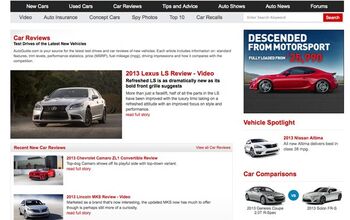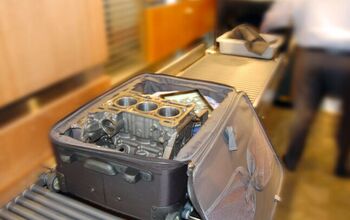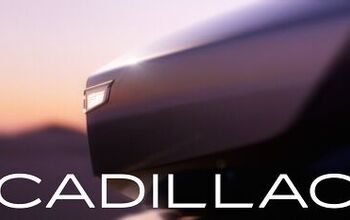2014 Ford Fiesta 1.0L Review – Video

As automakers struggle to find new ways to attract buyers with improved fuel economy while meeting increasingly strict government regulations, nothing is off the table. Nowhere is that more true than with the 2014 Fiesta.
FAST FACTS
| 1. Ford’s 1L 3-cylinder EcoBoost engine uses direct-injection and a turbocharger to deliver 123 hp and 148 lb-ft of torque. |
| 2. Ford says fuel economy will be over 40 mpg on the highway and that the Fiesta 1L will be the most fuel efficient non-hybrid on sale in America. |
| 3. While pricing has yet to be released, EcoBoost engine options normally cost a $995 premium. |
While a modern car, with new tech features, a progressive design, and some advanced combustion tricks, Ford’s new small car also includes something decidedly retro: a 3-cylinder engine. And a tiny one at that.
It goes without saying that such an engine should be compact, though Ford has taken downsizing to extremes with a displacement of just 1.0-liter. Small enough to fit in a piece of carry-on luggage, if that mental picture isn’t clear enough, visualize half a six-pack of beer and you’re not far off.
SMALL BUT SOPHISTICATED
Banished from our shores for over a decade the 3-banger returns, but with more than a few surprises. The Geo Metro and Subaru Justy may have delivered solid fuel economy numbers, which the Fiesta promises, though they lacked the ability to accelerate beyond what even your grandmother would consider a lethargic pace. They were also low-tech budget solutions. The Fiesta’s new 3-cylinder, however, is considerably more modern.
For starters it uses direct-injection technology. And when combined with a turbocharger, however miniscule, power is far more than you’d expect.
Rated at 123 hp and 148 lb-ft of torque, it’s three more ponies and a robust 36 more lb-ft of torque than the standard 1.6-liter 4-cylinder on offer.
WATCH OUT HYBRIDS
Get the Flash Player to see this player.
Then there’s the fuel economy, which Ford is being partially secretive about. Current 1.6-liters are rated at a best of 30 mpg in the city and 40 on the highway and when it comes to actual numbers the only one Ford will confirm is that the Fiesta 1-liter will in fact deliver more than 40 mpg on the highway.
How much more? Enough to make it the most fuel efficient non-hybrid on sale in America.
In our tests, which included some casual highway highway cruising as well as some rather athletic sprints up the canyon roads north of Los Angeles, we managed a 32.5 mpg average. Using a 5-speed manual Euro-spec model, we have to think the 6-speed automatic that will come in US models, combined with more reasonable driving should deliver something closer to 35 mpg – if not better.
THOSE THREE DREADED LETTERS
There’s far more to the experience of driving a 3-cylinder than just good power and good fuel economy, however. And it’s not all good.
The Fiesta is torquey and just touching the throttle will let you know this isn’t your normal gas miser. It does, however, sound a good bit like a diesel, and not just from the outside either. While quiet while cruising with steady throttle, tip in just a little and you can’t but notice the engine’s drone – which gets old fast.
In a presentation prepared for journalists Ford engineers explained at length what tricks were used to keep the engine smooth and quiet, ranging from the unbalanced pulley and flywheel that feature weights to counteract and smooth out the natural shaking of the engine, to a noise-dampening iron block and a timing belt that runs through an oil bath to stay quiet. Regardless, it’s not enough.
More bothersome than the sound is the feel, with waves of shaking though the entire car anywhere around 1500 rpm.
The industry acronym used to measure these sorts of things is NVH (noise vibration and harshness). The Fiesta has all three.
BUT IT’S NOT ALL BAD
Then there are the added benefits to go with these sacrifices. Rev the engine out and it makes the Fiesta a solid bit of fun. An already nimble car with excellent steering, it’s a step shy of a hot hatch with this new motor. That buzzing engine also raises its note near redline and sounds excellent, like someone holding a pillow on the exhaust of a V8.
Up the canyon roads it was obvious just how much torque it makes. While we descended in 2nd gear, going up was possible in third, with plenty of boost available low down. Small cars never go up hills this easily and for that reason this exception is a big one.
NEW LOOK, NEW TECH
There is, however, more to the 2014 Fiesta than just an engine. It’s impossible to miss the new front fascia, with the Ford’s new corporate front grille (formerly known as that of Aston Martin).
Along with some new paint choices and upgraded interior trim, the cabin also does away with the old monotone red display screen for a proper color unit. Those who prefer their small cars to come equipped with the amenities of a larger one can do so as well with options that include leather seats, a new Sony premium sound system with 8-speakers (the most in the segment), as well as MyFord Touch with a 6.5-inch display screen. The first appearance of the telematics system in the Fiesta, it’s an updated version of the original with what Ford claims are improved voice recognition and spoken word commands, plus simpler display screens and menus.
Parents looking for a small car for their teen drivers will also appreciate the appearance of MyKey, which lets them pre-set maximum speed and stereo volume, while also ensuring traction control can’t be shut off.
If there’s one area of the Fiesta that is lacking that Ford didn’t (and can’t really) improve upon, it’s cargo room. With 14.9 cu-ft behind the second row it’s one of the least spacious trunks in the segment.
ECO WILL BE EXTRA
Despite the less than advertised NVH of the 1.0-liter engine, the overall quality of the 2014 Fiesta means that it’s also unlike the old 3-cylinders in another important way; it’s not a budget econo-box. And that will be reflected in its price.
While Ford hasn’t released those numbers, just because the engine is smaller, don’t expect the price of entry to be. On the contrary, all of Ford’s EcoBoost fuel-saving options come at a premium, with the automaker first taking the bold step in the 2011 Edge by charging more for the turbocharged 4-cylidner than the V6.
The new EcoBoost 1.0-liter isn’t a replacement engine but rather an option, and the markup on the rest of the Ford lineup is roughly $995. With the current hatchback priced at $14,200 and a slight increase expected for the 2014 model, the 3-cylinder Fiesta should come in at closer to $16,000.
THE VERDICT
Ford is desperate to make the Fiesta 1.0-liter a success. With it the Blue Oval will offer eight models with 40+ mpg, helping it bolster its fuel economy claims and pull out every trick possible to meet government mandated fuel economy targets.
It’s not a complete writeoff. There’s more acceptance by sub-compact buyers for sacrifices in order to achieve maximum fuel economy. In addition, the one-liter delivers a solid dose of power. Those in search of a small car with some pep-in-its-step are more likely to look past a few NVH issues for some added thrills from an engine that will make stops at the pump a less frequent occurrence. That said, it’s an attractive product for the young male demographic.
Still, with the Fiesta being known as a segment leader and a car that raised the bar a few years back, Ford’s new 3-cylinder EcoBoost engine feels like a step-backward in the struggle to make sub-compact cars more refined.
LOVE IT
- More MPGs
- A small car with torque
- Handsome styling
LEAVE IT
- Noise
- Vibration
- Harshness

With AutoGuide from its launch, Colum previously acted as Editor-in-Chief of Modified Luxury & Exotics magazine where he became a certifiable car snob driving supercars like the Koenigsegg CCX and racing down the autobahn in anything over 500 hp. He has won numerous automotive journalism awards including the Best Video Journalism Award in 2014 and 2015 from the Automotive Journalists Association of Canada (AJAC). Colum founded Geared Content Studios, VerticalScope's in-house branded content division and works to find ways to integrate brands organically into content.
More by Colum Wood





























Comments
Join the conversation